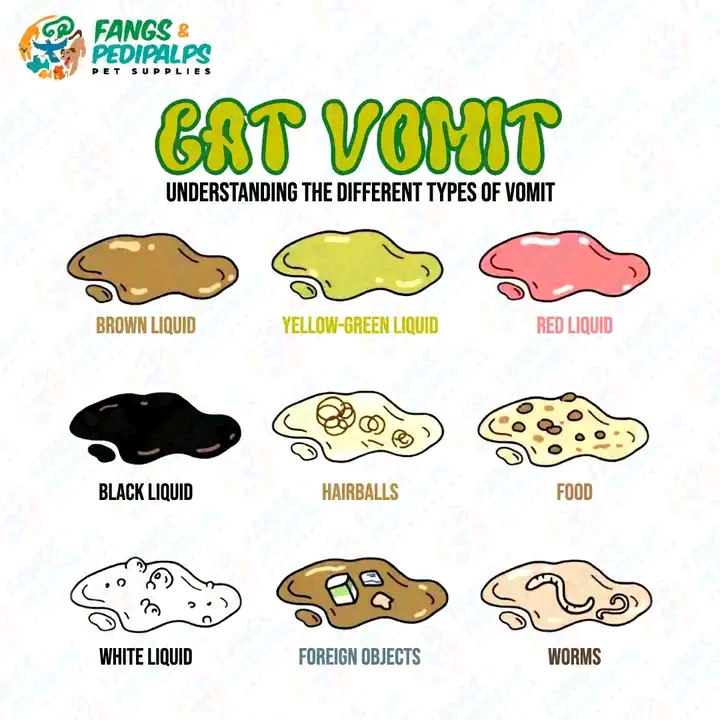Your cat can throw up undigested food when they are regurgitating. This is done because the food has not been fully digested. Regurgitating is different from vomiting.
When a dog vomits, it tends to spill out everything they have eaten. A cat may throw up digested food when vomiting. To get more on the reason your cat throws up undigested food, read along!
Symptoms of Vomit
Here are the symptoms when a cat is vomiting:
The symptoms of vomit include:
1. Abdomen Contractions
Feline, such as cats, may begin to shrink when vomiting. Cats make an effort and stretch to vomit content out of their body. They would try to lift with difficulty to bring out digested food in their stomach. This would require strength and effort on their part. This would involve squeezing and straining their abdomen to vomit the content out.
READ MORE:How To Treat Petting Aggression In Cats
2. Digested Food
A cat vomit may typically include food that has been processed down. Usually, when a cat vomits you see food that has been processed, undigested, and bile. A cat might decide to regurgitate the food they have chewed.
When a cat regurgitates you may not see any digested food. You often see undigested food. This is not like vomiting. Vomiting would only include digested food.
Symptoms of Regurgitation
Here are symptoms to observe while regurgitating:
No Abdomen Contraction
When a cat regurgitates, the does not struggle with difficulty bringing the food out. Usually, the cat would not bring out digested food. As a cat owner, it is good to observe this summer sign from your cat.
Water and Saliva
This is another sign to notice when a cat regurgitates. A cat may tend to regurgitate when their head is bent low. In a cat regurgitation, you tend to see water and Saliva. Only undigested food may be part of the water and saliva.
Undigested Food
A vomiting cat will frequently lunge forward and stoop as they heaves, whereas a regurgitating cat may simply lower their head slightly and rapidly evacuate the food. In short, vomiting is a very active process—your cat’s body will be visibly fighting to expel the contents of its stomach. Regurgitating is more passive and can occur swiftly and softly.
If you find what appears to be vomit on the ground, search for undigested food—the more undigested food there is, the more likely it was regurgitated by your cat. Even if you know what vomiting and regurgitation are, it might be difficult to tell the difference at the moment.
Reason A Cat May Vomit
Here are reasons a cat might vomit
Hairballs
Cats will occasionally swallow their fur while grooming themselves. Look for a clump of hair in undigested food to see if they are throwing up due to a hairball.
Eating Excessively Or Too Rapidly
Overeating may result in vomiting or regurgitation. If your cat eats too quickly, they may swallow a large amount of air and develop an upset stomach.
Food Sensitivities
Have you just added a new food to your cat’s diet? They may have a food sensitivity to a new component.
Ingesting Foreign Objects
Cats are curious creatures who may unintentionally consume a thread or piece of plastic when playing with a toy. They can also swallow something they find on the floor, which can cause vomiting.
Why Do Cats Vomit Yellow Liquid
Yellow vomit is often composed of stomach acids and bile and can appear frothy. The stomach lining produces acids to help with digestion. Bile is created by the liver and stored in the gallbladder, but it also enters the stomach to aid digestion.
When cats vomit yellow liquid, it is usually because their stomachs are empty and the digestive acids have created irritation. This explains why certain cats vomit when they are extremely hungry.
However, yellow liquid vomit could be more than just stomach acid and bile; it could also indicate that your cat ate something yellow and is unable to digest it. Several health issues can induce vomiting in cats, so don’t ignore your pet’s yellow vomit.
FAQ
How do I know my cat has a stomach upset?
If your cat has an upsetting stomach, you need to observe signs like:
Vomiting
Diarrhea
Loss of Weight
Constipation
How often should I feed my cat?
You can feed your cat depending on the age. Cats of 2 to 4 weeks should be fed regularly. However, cats of 4 to 8 months can be fed three to four times daily.
What should a cat eat after vomiting?
A cat should be fed it’s bland diet. This would include cooked chicken and rice.
Conclusion
In conclusion, regurgitation and vomiting are signs that should be reported to your veterinarian. A veterinarian is in the best position to proffer solutions to your cat. Do well to read this article.





One thought on “Why Is My Cat Throwing Up Undigested Food?”